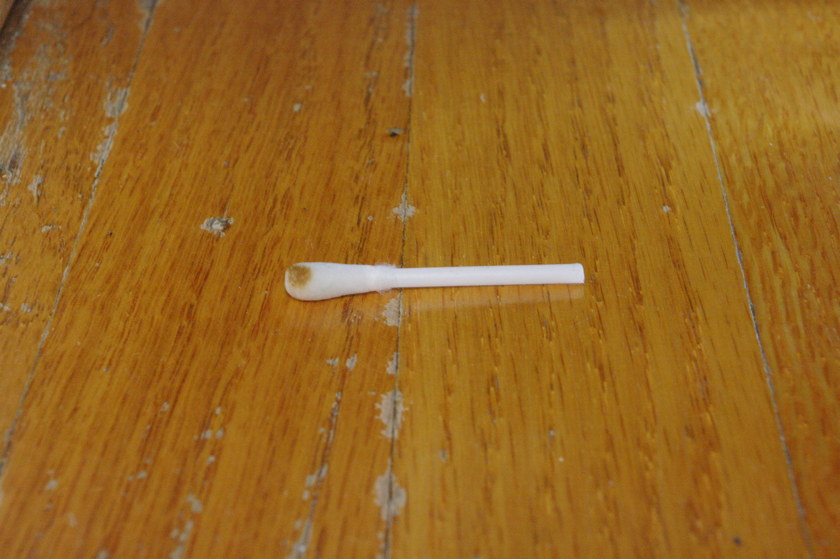How to test for lead
Recently, It was time to sand some floors as the wear level was low. Some hardwood floors installed 1977 or before contained lead in the finishing layer. Having lead in the floors was very regional and installer specific. Some areas of North America never had any lead used in the finish at all. Some people liked to use lead, some didn’t. I went to my local hardware store and bought a lead test kit at about $10. Make sure you test it in an inconspicuous area, maybe in a closet where the finish has not been disturbed too much. After my test was complete, it was very apparent that there was a positive result as you can see from the photo. If you get a positive result, it is a good idea to get that result verified from an environmental testing company. In this case, a piece was ripped out from the hardwood from the closet. I had dropped it off at my local environmental testing company, who verified a 1% lead content.
The dangers of sanding floors
Sanding and retaining and applying some new polyurethane on a floor without question can save thousands of dollars instead of replacement, however if you should not sand your floors at all, that has lead content. Some companies have some excellent equipment that they market as able to capture 99% of dust or even more. These dustless systems are fantastic from reducing the absolute chaos of dust getting everywhere involved with sanding a floor even when the room is depresurized. Remember that the issue is not just about the amount of dust in the air, but the size of the particle that these systems can catch. 99% sounds like alot, but is no where near safe. Dust particles are not easy to control. If you are at all familiar with sanding you will know that the only true method to reducing dust particles is to literally use plastic to encapsulate a room. Not many lead particles are needed to be inhaled cause problems with your health.
Test it yourself first for one good reason, dont rely on your contractor.
The reason is quite simple. Most hardwood installers don’t test. You will know if your contractor tests for lead in your house because the testing kit has a very strong distinctive smell that will fill up the room, it is very pungent and unpleasant. I spoke to a reputable installer in Toronto and said to me “I have not come across that in 25 years”. In a cookie cutter post WW2 house, and I can tell you many others on the same street probably had it too. This reputable installer just didn’t test over that time. If you have had your floors sanded recently and are concerned about airborne particles, most environmental testing companies provide on-site air testing to determine if the air is safe. Lead particles do not stay in the air too long and settle, but end up in unwanted places making cleanup more difficult.
Safe removal
Standard practice of hardwood removal with no lead content is to cut the floor with a circular saw in 4 foot strips which are easy to manage. When I was discussing removal methods with the hardwood flooring installer, they glazed right over this point, which also adds a large amount of dust into the air. So if you decide to let them do it, they better not cut strips in the floor. The method that was eventually used, was removing one plank at a time, without damaging the finish. It was easily more than twice the amount of labour, but lead particles did not end up in the air. Usually the environmental testing company will have project managers to guide you on other proper removal techniques. Lead abatement will cost approximately the same as new hardwood floors, so most of the time, it is better just to remove it. When thinking from an environmental standpoint, dangerous particles that are contained, or not airbourne is always favoured over airborne (Think of CO2 in the air vs CO2 capture). Removal is most likely the more environmentally friendly choice. Different jurisdictions will have different rules about disposal of lead content boards.
- Always test for lead yourself first with an inexpensive test kit if you decide to sand your floor
- If a positive result appears, verify from your local environmental testing company
- Never sand a floor with any lead content, even if it is lower than 1%
- “Dustless” sanders from professional flooring companies are effective for minimizing dust, but are not perfect, and not suitable for lead removal.
- Standard strip cutting removal methods can’t be used.
- Most environmental companies employ project managers who can guide you in proper procedures.
- Entrapped lead in your hardwood is more environmentally friendly that releasing the lead into the air


